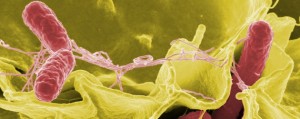Public Health England (PHE) is investigating a national outbreak of a type of Salmonella Enteritidis which has affected 247 people.
To date, 99 cases have seen in Hampshire, 30 in London, 39 in Cheshire and Merseyside, and 54 in the West Midlands. Cases have also been seen in Austria and France.
 |
| [relatedPosts title=”Related Posts”] |
In England, the cases occurred as isolated clusters over several months and have been managed locally, but are now being reassessed as potentially linked under a national investigation.
Dr Paul Cleary, a consultant epidemiologist leading the PHE investigation, said:
“We are working with our colleagues across PHE, the Food Standards Agency, in local authorities and with other public health organisations in Europe to investigate the cause of this outbreak.
We are making good progress and hope to have more conclusive evidence shortly. We will continue to monitor the situation and if there is any further public health action necessary then we will ensure that this takes place.”
Testing using genetic typing methods has revealed that all of the cases are infected with closely related strains, indicating that the cause of the illness is from a single source. Some food and environmental samples from catering outlets have tested positive for Salmonella with the same genetic profile as seen in the outbreak cases.
Salmonella Enteritidis is a strain of bacteria that causes gastrointestinal illness and is often associated with poultry or eggs. Symptoms include diarrhoea, stomach cramps and sometimes vomiting and fever. Symptoms are self-limiting and most people recover without treatment although it is important to remain hydrated.
Further Information
By the time a person with food poisoning has (1) sought medical attention, (2) been tested for infection at a local laboratory, with (3) the sample then being sent on the national reference laboratory for further specialised analysis to identify the strain, it is not unusual for a couple of weeks to have passed from the onset of illness; therefore the current case count reflects the situation approximately 2 weeks previously.
Even when an outbreak is over and no further new cases are occurring, PHE expect to see cases with delayed reporting added to the current case count for a further couple of weeks.





